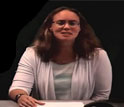News Release 11-193
Scorched Earth: The Past, Present and Future of Human Influences on Wildfires
A new framework for evaluating human influences on wildfires is developed

More than 30 percent of the Earth is subjected to frequent fires.
September 14, 2011
View a video with Jennifer Balch of the National Center for Ecological Analysis and Synthesis.
This material is available primarily for archival purposes. Telephone numbers or other contact information may be out of date; please see current contact information at media contacts.
Fires have continuously occurred on Earth for at least the last 400 million years. But since the 1970s, the frequency of wildfires has increased at least four-fold, and the total size of burn areas has increased at least six-fold in the western United States alone. Steadily rising, the U.S.'s bill for fighting wildfires now totals $1.5 billion per year.
How much of the increases in the frequency and size of fires are due to human activities? No one knows for sure. But a paper in this week's issue of the Journal of Biogeography puts the role of fire in natural ecosystems into context and provides support for efforts to plan for future risks from wildfires.
Produced by an international team of researchers, the paper presents a new framework for considering wildfires based on the Earth's pre-human fire history, ways that humans have historically used and managed fire and ways that they currently do so. "We need to look into the past to understand our current and future relationship with fire activity," says Jennifer Balch of the National Center for Ecological Analysis and Synthesis.
This research emphasizes the importance of understanding the relative influences of climate, human ignition sources and cultural practices in particular environments in order to design sustainable fire management practices that protect human health, property and ecosystems.
More information about this research, partially funded by the National Science Foundation, is provided in the accompanying interview with Balch, as well as in a press release issued by the University of California at Santa Barbara.
-NSF-
-
View Video
Jennifer Balch discusses human contributions to wildfires.
Credit and Larger Version
Media Contacts
Lily Whiteman, National Science Foundation, (703) 292-8310, email: lwhitema@nsf.gov
Robin Vercruse, National Center for Ecological Analysis & Synthesis, (805) 892-2528, email: vercruse@nceas.ucsb.edu
Program Contacts
Henry Gholz, National Science Foundation, (703) 292-8310, email: hgholz@nsf.gov
Co-Investigators
Jennifer Balch, National Center for Ecological Analysis & Synthesis, (805) 892-2522, email: balch@nceas.ucsb.edu
Related Websites
Press release by the University of California, Santa Barbara: http://www.ia.ucsb.edu/pa/display.aspx?pkey=2559
The U.S. National Science Foundation propels the nation forward by advancing fundamental research in all fields of science and engineering. NSF supports research and people by providing facilities, instruments and funding to support their ingenuity and sustain the U.S. as a global leader in research and innovation. With a fiscal year 2023 budget of $9.5 billion, NSF funds reach all 50 states through grants to nearly 2,000 colleges, universities and institutions. Each year, NSF receives more than 40,000 competitive proposals and makes about 11,000 new awards. Those awards include support for cooperative research with industry, Arctic and Antarctic research and operations, and U.S. participation in international scientific efforts.
Connect with us online
NSF website: nsf.gov
NSF News: nsf.gov/news
For News Media: nsf.gov/news/newsroom
Statistics: nsf.gov/statistics/
Awards database: nsf.gov/awardsearch/
Follow us on social
Twitter: twitter.com/NSF
Facebook: facebook.com/US.NSF
Instagram: instagram.com/nsfgov

